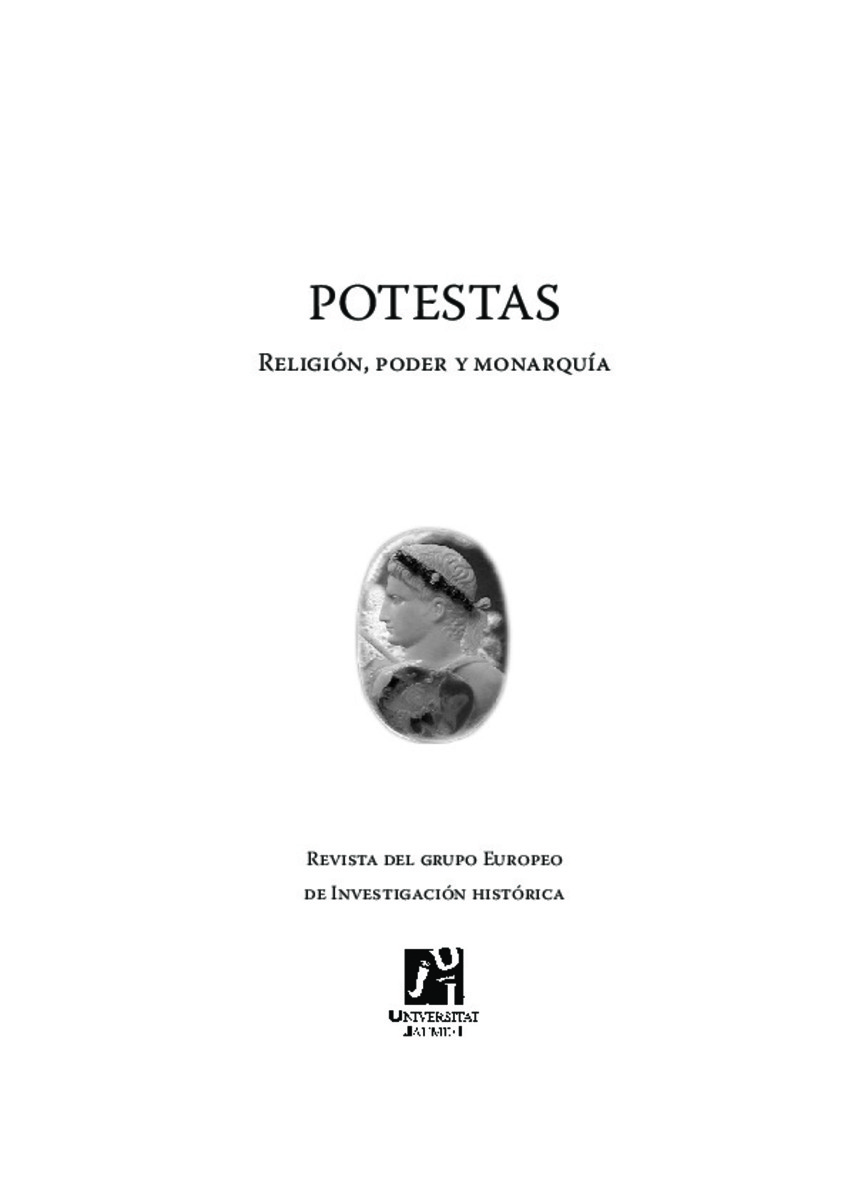Mostrar el registro sencillo del ítem
Der Leichnam des Princeps zwischen Consecratio und Damnatio
| dc.contributor.author | Kunst, Christiane | |
| dc.date.accessioned | 2012-06-25T10:24:01Z | |
| dc.date.available | 2012-06-25T10:24:01Z | |
| dc.date.issued | 2008 | |
| dc.identifier.citation | Potestas nº 1-2008 | ca_CA |
| dc.identifier.issn | 1888-9867 | |
| dc.identifier.uri | http://hdl.handle.net/10234/42123 | |
| dc.description.abstract | This paper traces the changes memorial culture went through in Roman Imperial times (from 44BC-AD337). Since Augustus, Roman emperors displayed and legitimised their own claim to power and rulership by either affirming (i.e. divinisation) or damning (damnatio)the memoria of their predecessor. In this process, the importance of the biopolitical component, that is the control of the dead emperors body, must be stressed. As the imperial funerals provided one of the first public appearances of the new emperor, they were of primary importance. Traian introduced a form of funeral in which the funus publicum of a former ruler was combined with his apotheosis – with the new emperor, and him alone, in charge of both acts of state. In the case of damned emperors, their body was of lesser importance, though sometimes subjected to dishonouring post-mortem punishment. Interestingly, it was possible to reverse the course of a damnatio and perform a consecration afterwards (i.e. after another candidate ascended to the throne), whereas consecrated emperors were exempt from all further criticism. | ca_CA |
| dc.description.abstract | Este artículo rastrea los cambios Memorial de la Cultura fueron a través de la época imperial romana (44 antes de Cristo-de la AD337). Desde Augusto, Emperadores romanos muestra y legitima su propia demanda al poder y gobernar, ya sea afirmando (es decir, la divinización) o condenatoria (damnatio) la memoria de su predecesor. En este proceso, la importancia de la componente biopolítico, que es el control del cuerpo emperadores muertos, Hay que subrayar. Como los funerales imperiales siempre uno de los ciudadanos primero apariciones del nuevo emperador, que eran de importancia primordial. Traian introducido una forma de funeral en el que el publicum funus de un ex gobernante se combinó con su apoteosis - con el nuevo emperador, y sólo a él, a cargo de los dos actos del Estado. En el caso de condenados emperadores, su cuerpo era de menor importancia, aunque a veces sometido a deshonrar el castigo post-mortem. Curiosamente, que era posible invertir el curso de una damnatio y realizar un la consagración después (es decir, después de otro candidato ascendió a la trono), mientras que los emperadores consagrados estaban exentos de todas las nuevas la crítica. | ca_CA |
| dc.description.abstract | Der Aufsatz verfolgt die Wandlungen der Memorialkultur der römischen Kaiserzeit von 44 v.Chr. bis 337 n.Chr. Seit Augustus bekräftigten und legitimierten die römischen Kaiser ihren Anspruch auf die Herrschaft indem sie das Andenken (memoria) ihres Vorgängers entweder bestätigten und ehrten (also eine Divinisierung vollziehen ließen) oder verdammten (damnatio). Im Rahmen dieses Prozesses muß die biopolitische Komponente, die Kontrolle über den Leib des verstorbenen Vorgängers, besonders herausgestellt werden. Da die kaiserlichen Begräbnisse einen der ersten öffentlichen Auftritte der Nachfolger darstellten, waren sie von höchster Wichtigkeit. Traian führte Veränderungen im Begräbnisritual ein, indem er funus publicum und consecratio zugleich durchführte. Der neue Kaiser – und nur er – war für diesen doppelten Staatsakt verantwortlich, und profitierte legitimatorisch davon. Im Fall geächteter Kaiser war der Leib/ Körper von nachrangiger Bedeutung, sieht man von vereinzelt vollzogenen entehrenden posthumen Bestrafungen ab. Allerdings bestand die Möglichkeit, einen der damnatio unterworfenen Kaiser nachträglich doch noch zu divinisieren (z.B. nach einem weiteren Herrscherwechsel), den Prozess der damnatio also umzukehren. Der divinisierte Kaiser dagegen war fortan jeglicher Kritik enthoben. | ca_CA |
| dc.format.extent | 25 p. | ca_CA |
| dc.format.mimetype | application/pdf | ca_CA |
| dc.language | deu | ca_CA |
| dc.language.iso | cat | ca_CA |
| dc.publisher | Universitat Jaume I. Grupo Europeo de Investigación Histórica | ca_CA |
| dc.rights.uri | http://creativecommons.org/licenses/by-sa/4.0/ | * |
| dc.subject | Memorialkultur | ca_CA |
| dc.subject | Biopolitische Komponente | ca_CA |
| dc.subject | Consecratio– damnatio | ca_CA |
| dc.subject | Funus publicum | ca_CA |
| dc.subject | Römische Kaiserzeit | ca_CA |
| dc.subject | Memorial Culture | ca_CA |
| dc.subject | Memorial de la Cultura | ca_CA |
| dc.subject | Biopolitical component | ca_CA |
| dc.subject | Componente biopolítico | ca_CA |
| dc.subject | Consecratio– damnatio | ca_CA |
| dc.subject | Roman Imperial times | ca_CA |
| dc.subject | Época Imperial Romana | ca_CA |
| dc.subject.other | Història -- Revistes | ca_CA |
| dc.subject.other | Religió i política -- Revistes | ca_CA |
| dc.title | Der Leichnam des Princeps zwischen Consecratio und Damnatio | ca_CA |
| dc.type | info:eu-repo/semantics/article | ca_CA |
| dc.identifier.doi | http://dx.doi.org/10.6035/Potestas | |
| dc.rights.accessRights | info:eu-repo/semantics/openAccess | ca_CA |








